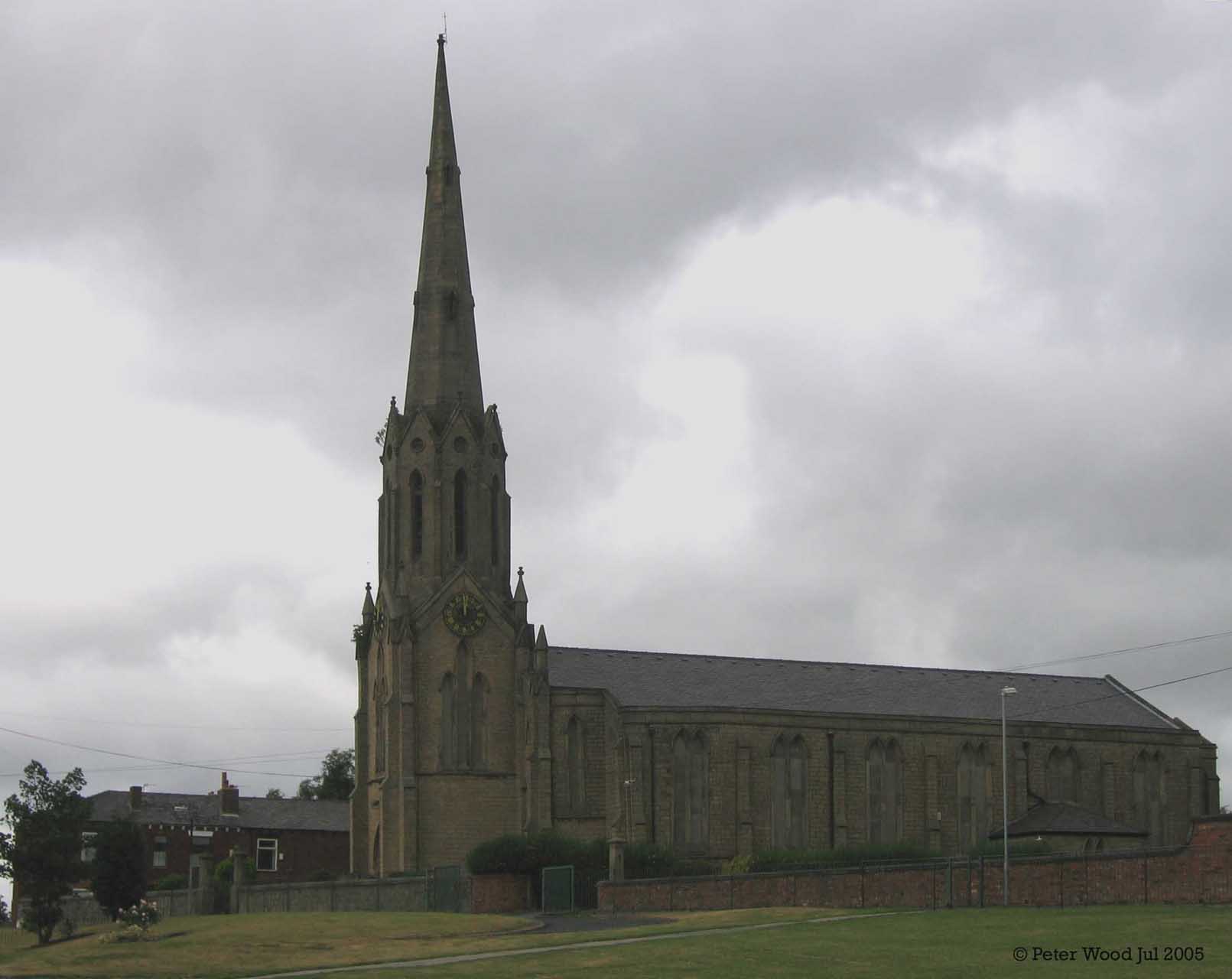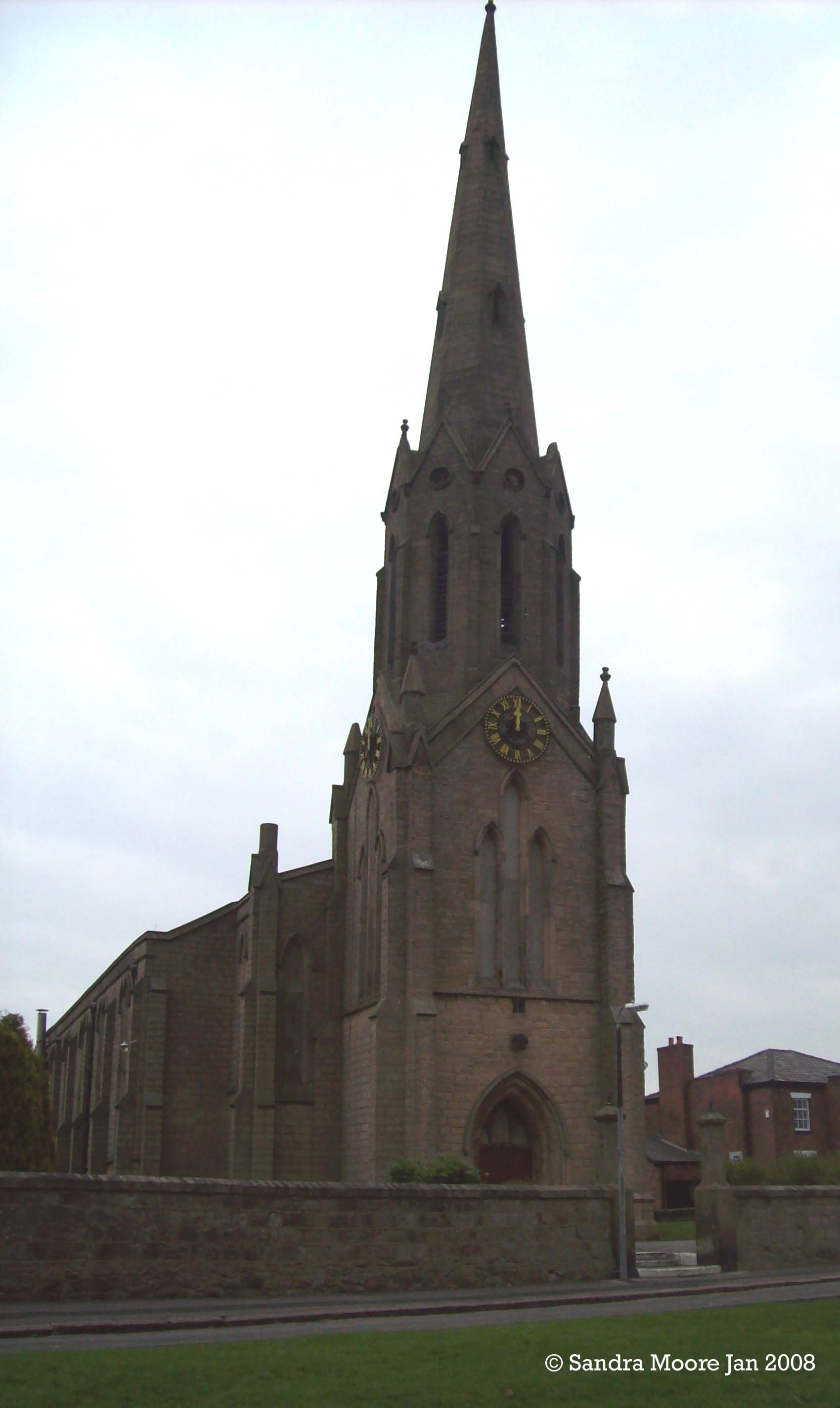 |
The Church of St Catharine, Scholes, Wigan |
 |
 | |
The following information was extracted by Barbara Prescott from ‘The First 150 Years of St Catharines’s Church Wigan’ by Bill Bithell, 1991. The author kindly and freely gave his permission.
 | |
St Catharine’s Church was built under the Church Building Act of 1818, which provided funding for churches in populous areas, where no church had previously existed. The application for a grant had to be made by the Incumbent of the existing parish, and in this case, was made by the Rector of Wigan.
Land at the top of Scholefield Lane in Scholes was donated by Mr John Woodcock of Springfield Hall, who also provided additional, adjacent land to be used for a Vicarage. The architect was Mr E Sharpe of Lancaster, who went on to design a number of other churches after St Catharine’s, and local craftsmen were involved in the construction, which began in 1839, using stone quarried from Billinge.
The Chapel of Ease, as it then was, was finished in 1841 and had a vertical spire rising 190ft into the air, visible from many miles around. It was only in 1864 that it was granted full parish status and became The Parish Church of St Catharine, Wigan.
On 6th June 1841 the church was consecrated by Rt Rev John Bird, Bishop of Chester, and the first appointed Priest in Charge (or Perpetual Curate as he sometimes signed himself) Rev William Coombs led prayers and communion. It wasn’t until 1863 that the first minister was licensed as Vicar – he was Rev Thomas Higham.
Sometime around 1860 the ‘e’ in Catherine was changed to ‘a’, probably by accident, but since then the church has always been St Catharine’s.
The church appears to be built of finely dressed stone, but this is just the exterior. It became apparent in 1860 that there were major problems. Once the interior plaster is removed, it can be seen that the interior is made up of stone rubble, mortared into position. St Catharine’s has been built on a geological fault, which runs by Amberswood Common, under the church to the Boar’s Head at Standish. In 1860, because of extensive coal mining in the area, the fault moved, and with it the west end of the church, including the spire. So it was that St Catharine’s Church became the building well known around Wigan as the church with the leaning spire.
The building was declared unsafe and services discontinued while discussions were held to decide whether to demolish and rebuild or to repair it. It was decided on continuous repair and maintenance, and, as local collieries were deemed partially responsible, they were approached for help. Ince Hall Colliery and Rose Bridge Colliery both helped to repair the damage and Platt Lane Colliery was asked for monetary support (it being the only colliery within the parish).
The population around the church was growing fast. As well as the church building and the Sunday School on Scholefield Lane (which became a day school), another building was purchased for the use of organisations. This was Platt Lane Mission.
The area around the church was a very poor area, mainly inhabited by colliery workers. Their homes are described as ‘hovels’, and most only owned the clothes they stood up in. Consequently many of them did not attend church as they had nothing ‘decent’ to wear. Around 1900 Mr Edmund Baldwin invited boys from off the streets into his home, where he told them Bible stories, while his wife, Mary Ann, provided cake for the hungry youngsters. Inevitably the number of boys attending soon escalated, until there was no longer room in his home. Permission was then granted for Mr Baldwin to transfer his ‘Sunday School’ into Platt Lane Mission. So it was that St Catharine’s came to have two Sunday Schools. By the late 1920s hundreds of children were attending St Catharine’s Sunday Schools, confirmed by the fact that there were 61 Sunday School teachers and a Superintendent.
The parish covered a large area stretching from the top of Whelley to Sovereign Road. In the 1870s there was a large growth in population and it was decided to open a second school in Whelley, known as the Whelley Mission. It was built in 1872 on land leased to the Vicar and Churchwardens of St Catharine’s, providing that the Vicar should have the superintending of the religious and moral teaching of the children. He also had the right to use the premises as a Sunday School and Mission Church, which he did. It wasn’t until 1925 that St Stephen’s Parish was formed in Whelley taking in sections of St Catharine’s and St George’s Parishes.
LIST OF VICARS OF THE PARISH OF ST CATHARINE, WIGAN
| 1841 | William Coombs |
| 1858 | William T Whitehead |
| 1863 | Thomas Hughes |
| 1876 | Edwin A Dury |
| 1903 | Edmund C Poulter |
| 1910 | Travers S Stoney |
| 1912 | Benjamin T Bowker |
| 1915 | Edward Mayson |
| 1921 | Henry Lionel Gibbs |
| 1926 | William H Willetts |
| 1930 | William H Royden |
| 1935 | Albert E Hamm |
| 1938 | Henry Ellis |
| 1947 | Evan J Gwyn Rogers |
| 1954 | Charles E Corbett |
| 1962 | Thomas F Robinson |
| 1967 | Robert L Metcalf |
| 1975 | Peter M Greenslade |
| 1977 | Norman Bond |
| 1989 | Colin R Smith |
| Wigan Home & Contents | ©Lancashire OnLine Parish Clerks | Lancashire Home |